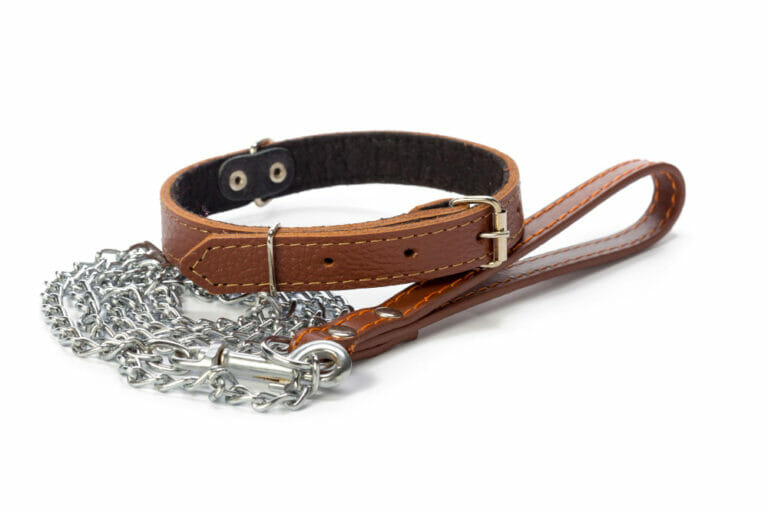Harness vs. Collar: Which Is Best for Your Dog’s Comfort and Safety
As responsible dog owners, ensuring the comfort and safety of our furry companions is a top priority. One essential decision every dog owner faces is whether to use a harness or a collar for walking and daily activities. Both options have their advantages and considerations, and understanding the differences can help you make an informed choice that promotes your dog’s well-being. In this article, we’ll explore the pros and cons of harnesses and collars, discussing which option might be the best fit for your dog’s comfort and safety.
Introduction
Walking your dog isn’t just about exercise; it’s a bonding experience that allows you both to explore the world together. Choosing between a harness and a collar can significantly impact this experience. While collars have been a traditional choice for attaching leashes, harnesses have gained popularity in recent years due to their potential benefits for certain dogs.
Understanding Harnesses
Types of Harnesses
There are various types of harnesses available, including back-clip, front-clip, and step-in harnesses. Back-clip harnesses attach to the dog’s back, while front-clip ones attach to the chest. Step-in harnesses are placed on the ground and require the dog to step in before fastening.
Pros of Using a Harness
Harnesses distribute the force of the leash pulling across the dog’s chest and shoulders, which can be advantageous for dogs with delicate throats. They can also provide more control over dogs that tend to pull during walks. Additionally, harnesses are useful for small breeds and brachycephalic dogs prone to breathing difficulties.
Cons of Using a Harness
Some dogs might resist wearing a harness initially, and improper fitting can lead to chafing or discomfort. Front-clip harnesses might encourage pulling in some dogs, and they can be more complicated to put on.
Exploring Collars
Types of Collars
Collars come in various styles, such as flat collars, martingale collars, and prong collars. Flat collars are the standard ones worn daily, while martingale collars tighten slightly when pulled, preventing dogs from slipping out. Prong collars have metal prongs that apply pressure when the leash is pulled.
Pros of Using a Collar
Collars are easy to put on and adjust, making them convenient for quick walks. They’re suitable for dogs that don’t pull excessively and are already well-trained on a leash.
Cons of Using a Collar
Collars can put pressure on a dog’s neck and trachea, especially if they pull strongly. This can lead to discomfort, breathing issues, or even injury. Martingale and prong collars, if not used correctly, can cause harm or pain to the dog.
Making the Right Choice
Considering Your Dog’s Size and Breed
The size and breed of your dog play a crucial role in determining the most suitable option. Smaller dogs or breeds prone to respiratory issues might benefit from a harness, while well-trained larger dogs might be comfortable with a collar.
Training and Behavioral Considerations
If your dog is a puller or exhibits leash-reactive behavior, a harness might offer more control. However, proper training is essential regardless of the chosen equipment.
Health and Medical Considerations
Dogs with certain health conditions might require a specific type of equipment. Collars might exacerbate neck problems, while harnesses could be uncomfortable for dogs with certain skin conditions.
Striking the Balance: Comfort and Safety
Balancing your dog’s comfort and safety is paramount. While harnesses offer more control and prevent neck strain, collars can be appropriate for well-behaved dogs that don’t pull excessively. Whichever you choose, ensure it’s fitted correctly and doesn’t cause any discomfort.
How to Introduce Your Dog to a Harness or Collar?
Introducing a new piece of equipment should be done gradually. Allow your dog to sniff and explore the harness or collar before putting it on. Reward them with treats and positive reinforcement to create a positive association.
Training Tips for Walking on a Harness or Collar
Proper leash training is vital, regardless of the equipment used. Use positive reinforcement and patience to teach your dog to walk politely without pulling.
Conclusion
In the harness vs. collar debate, there’s no one-size-fits-all answer. Your dog’s individual needs, behavior, and comfort should guide your decision. Prioritize their well-being and make an informed choice that enhances your walking experiences together.
FAQS
Q: Is a harness suitable for all dog breeds?
A: While harnesses can benefit many breeds, it’s essential to consider your dog’s specific needs and characteristics.
Q: Can I use a collar for a puppy?
A: Yes, but ensure the collar is appropriately sized and doesn’t cause any discomfort to the growing puppy.
Q: Are prong collars humane?
A: Prong collars can cause discomfort and pain if not used correctly. Positive training methods are usually recommended.
Q: How do I know if a harness fits my dog?
A: A properly fitted harness allows you to fit two fingers between the harness and your dog’s body.
Q: Should I use a harness for leash training?
A: A harness can provide more control during leash training, particularly for dogs prone to pulling, but proper training techniques are essential.






